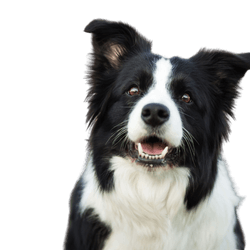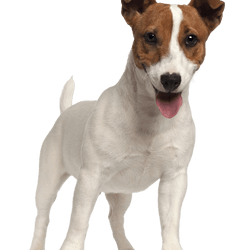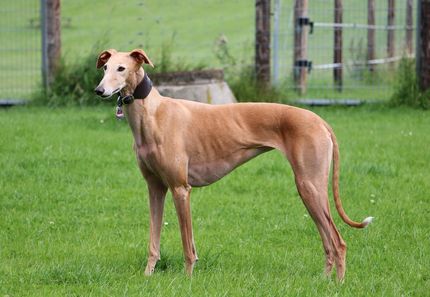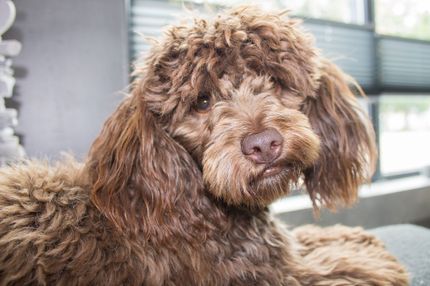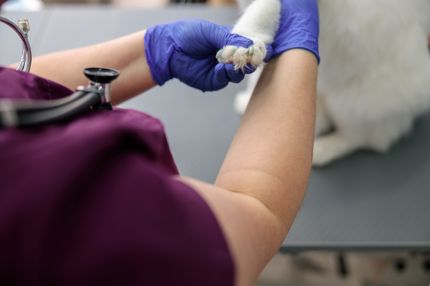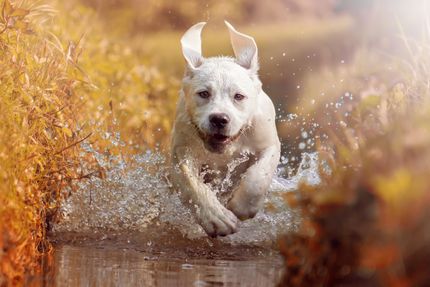Facts & Origin
Origin of the Border Jack
The Border Jack is a deliberately bred hybrid breed that is the result of crossing a Border Collie with a Jack Russell Terrier. Both parents are among the most active and intelligent dog breeds in the world - the Border Collie as a highly intelligent herding dog, the Jack Russell as an energetic, courageous terrier with a hunting instinct. The aim of this breed is to create a compact, athletic and above-average intelligent dog that is ideal for active people or families looking for an agile, eager-to-learn companion.
The Border Jack breed is not officially recognized, but has established itself among sporty dog owners and agility fans, particularly in the USA, Great Britain and Australia. This hybrid breed is particularly popular in dog sports, as it can perform impressively thanks to its combination of endurance, speed and willingness to learn.
Name synonyms
The term Border Jack is the most common name for this mix today, although other synonyms and name variants are also used unofficially. These include, for example
Border Russell
Jack Collie mix (but can also be a Collie - Jack Russel mix)
Collie Jack (but can also be a Collie - Jack Russell mix)
Border Terrier Mix (although this can be misleading as there is also a breed of "Border Terrier")
As there is no standardized designation and no official recognition as a breed, breeders and owners often use the terms variably and without a fixed definition. This makes it all the more important for prospective buyers to ask specifically about the actual parent animal combination in order to avoid misunderstandings.
Criticism: High demands on attitude and workload
Although the Border Jack often looks cute and appears manageable due to its size, the breed is not without its critics. Both original breeds are considered to be hard-working, exercise-intensive and extremely mentally demanding - which means that the Border Jack also places high demands on activity, training and mental stimulation.
Critics warn that this mix is easily underestimated, especially by families expecting an uncomplicated family dog. A Border Jack that is not sufficiently physically and mentally exercised quickly tends to become restless, destructive or hyperactive. Without clear leadership and structure, he can also react stubbornly, over-excited or even aggressively towards other dogs - especially if the terrier part dominates.
There are also health concerns if breeders crossbreed without taking genetics, temperament and health into consideration - for example, in order to obtain dogs that are purely athletic. Serious breeding should not only be based on performance, but also on temperament, balance and long-term compatibility in everyday life.
| Alternate Name | Border Russell, Jack Collie Mix, Collie Jack |
| Origin | UK - England |
| Life expectancy | 10 - 16 years |
| Care requirements | high-maintenance - low-maintenance |
| Activity level | high |
| FCI group | not recognised |
| AKC group | not recognised |
| KC group | not recognised |
More Border collie mixes
More Jack Russell Terrier mixes
Attitude, character and temperament of the breed
Possible character traits
A typical Border Jack is highly intelligent, eager to learn and extremely attentive. He loves challenges, learns new tasks at lightning speed and really thrives on sporting and mental activities. They often show the eagerness to work and the "will to please" of the Border Collie - paired with the fearlessness, courage and tenacity of the Jack Russell Terrier.
These dogs are very people-oriented, affectionate and loyal, but need clear rules and constant guidance. Without guidance, their high energy can quickly turn into nervous, hyper behavior patterns. They tend to control their environment - a legacy of herding behavior - and need to learn when to "take a break".
Border Jacks can get along well with other dogs if they have been socialized early. However, their hunting instinct (from the Jack Russell) can become a problem - especially with small animals or cats. They are suitable for families with children if the children know how to treat dogs respectfully and the dog is well behaved.
The Border Jack is ideal for active owners who enjoy hiking, running, cycling, agility, mantrailing or trick training. Couch potatoes or owners with little time will not be happy with this breed - and neither will the dog.
Character
Diseases & Care
Despite their robustness, Border Jacks - like all hybrid breeds - can inherit health predispositions from both parents. Possible breed-specific diseases are
Hip dysplasia (HD) - especially from the Border Collie
Patellar luxation (kneecap problems) - especially in the Jack Russell
Eye diseases (cataracts, progressive retinal atrophy)
Allergies and skin sensitivities
Epilepsy (rare, but genetically possible)
Regular check-ups, high-quality food and a healthy lifestyle can reduce the risk. Reputable breeders test their breeding animals for common hereditary diseases - this should definitely be taken into account when buying.
The Border Jack is relatively uncomplicated to care for. Its coat is usually short to medium length, smooth or slightly wavy and only requires weekly brushing to remove dead hair. Brushing can be done more frequently when the coat changes. Regular checks of ears, teeth and claws are also important - especially for very active dogs that spend a lot of time outdoors.
Possible appearance
The Border Jack varies in appearance - depending on which parent is more dominant. Many show a compact, athletic build, typical of Jack Russell Terriers, combined with the narrower, more elegant head and often intense gaze of the Border Collie.
Typical characteristics are:
Size: approx. 30-45 cm shoulder height
Weight: between 6 and 15 kg, depending on build
Coat: smooth, slightly wavy or wiry, usually of medium length
Colors: White-black, white-brown, tricolor, piebald, sometimes with mask
The ears can be erect, semi-erect or folded, the tail is often carried jauntily. Particularly striking is the often alert, intelligent look, which indicates a constant readiness to work. Despite their compact size, Border Jacks often appear very present, fast and agile - real little powerhouses with brains.
| Fur length | medium - short |
| Fur | flat coated - rough-haired |
| Ear shape | Standing Ears - Tilt-ear |
| Tail | fanned out - lang |
| Anatomy | slim, sporty, sporty |
| Size ♀ | 25 - 53 cm |
| Weight ♀ | 6 - 19 kg |
| Size ♂ | 25 - 56 cm |
| Weight ♂ | 6 - 20 kg |
| Suitable For | - |
Known Diseases
Epilepsy
Definition: Dog has epilepsy if, for example, at least two epileptic seizures occur more than 24 hours apart.
Eye diseases
Often occur with allergies and intolerances.
Cataract
Cataracts are still one of the most common causes of blindness, even in dogs.
Numbness
Often occurs in old age.
Ataxia
Ataxia (from Greek ἀταξία ataxia 'disorder' 'irregularity') is a generic term in medicine for various disorders of movement coordination. Ataxia can occur even when there is no paralysis (paresis), that is, when there is normal muscle strength.
Atopy
Canine atopic dermatitis or environmental allergy is characterized by itching with scratching, biting, and rubbing of the face, paws, and belly
Dermatophytosis
Dermatophytosis (synonym dermatophytosis, from ancient Greek τὸ δέρμα derma, German 'skin' and ancient Greek φυτόν phyton, German 'plant') or tinea (Latin for 'woodworm', 'moth') is a skin fungal disease caused by specific fungi (dermatophytes).
extreme whiteness
May be associated with some other diseases.
Legg-Calve-Perthes
Legg-Calvé-Perthes disease (aseptic femoral head necrosis) is a growth disorder of the femoral head.
Dislocations
Lenticular and patella luxation occur in some breeds and affect the eye.
Myelopathy
Degenerative myelopathies of dogs are a series of slowly progressing neurological diseases associated with destruction of the spinal cord. These diseases are associated with slowly progressive movement disorders of the hindquarters.
FAQ
-
A Border Jack is a cross between a Border Collie and a Jack Russell Terrier. These dogs are known for their high energy and intelligence and are often used as working dogs in a variety of fields.
-
Border Collie and Jack Russell Terrier mixes can look different, but most have a short, dense coat that is black, white or a mixture of both colors. They also have the characteristic long head and pointed ears of the Border Collie and the short legs and compact body of the Jack Russell Terrier.
-
Border Jacks are generally very energetic and very intelligent. They are often used as working dogs in various fields and are known for their loyalty and obedience.
-
Border Collie and Jack Russell Terrier mixes need plenty of exercise and mental stimulation. They should also be checked regularly for fleas and ticks. Claw and dental care is just as important.
-
Border Collie and Jack Russell Terrier mixes are generally healthy, but like all dogs, they are prone to certain health problems. These include hip dysplasia, elbow dysplasia and eye disease.
